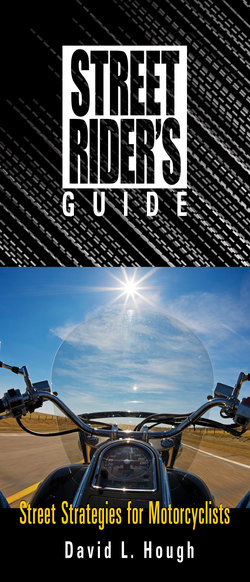Читать книгу Street Rider's Guide - David L. Hough - Страница 5
ОглавлениеAlley Acumen
Alleys are intersections, too.
You’re riding home from the hardware store with some fasteners you need to complete a project. You know about the danger of intersections, where other drivers often make sudden turns. You just passed through a busy intersection without incident, so you’re mentally relaxing until you get to the next intersection and mulling over your purchase of the 10 mm stainless steel bolts, hoping they are the right length.
Just as the car ahead of you passes an alley, an SUV suddenly begins to pull out. You’re startled, but manage to swerve left and avoid a crash. Now you’re shaking from the near collision, wondering what you might have done better to avoid the scare.
When riding in traffic, you know that intersections are potentially dangerous, but it’s important to recognize that alleys, driveways, streetside businesses, and parking lots also create intersections with the potential for collisions. Alley collisions are typically more likely to be fatal, perhaps because we just don’t appreciate the danger there.
Motorcycling is a full-time job, and allowing yourself to be distracted by other thoughts in hazardous locations puts you at additional risk. Surviving the street requires that you maintain your awareness of everything that’s happening around you, which includes not only vehicles you can see but your prediction of vehicles you can’t see yet, based on the situation.
When you are approaching any intersection where you can see or predict a vehicle on a cross street, including vehicles in alleys, be prepared to take action to avoid a collision. You can change speed to increase separation, but it’s usually better to slow down than to speed up. Accelerating increases forward energy, which makes it more difficult to pull off a quick stop or swerve if that becomes necessary.
You could also move farther away from the path of vehicles that potentially could collide with you. For instance, approaching an alley or side street on your right, move to the left side of your lane or even change to the left lane on a multilane street. Establishing eye contact with the other driver doesn’t guarantee that he or she won’t pull out, but if you can’t see the other driver, you know he or she can’t see you. If you suspect that the other vehicle might pull out, it is smart to brake early to make space, to avoid having to attempt a quick avoidance maneuver in the last couple of seconds.
